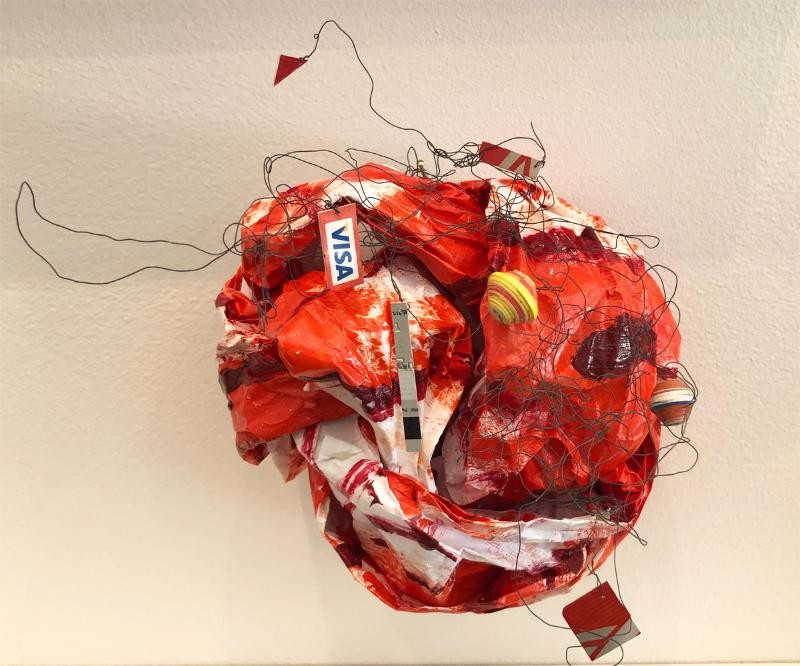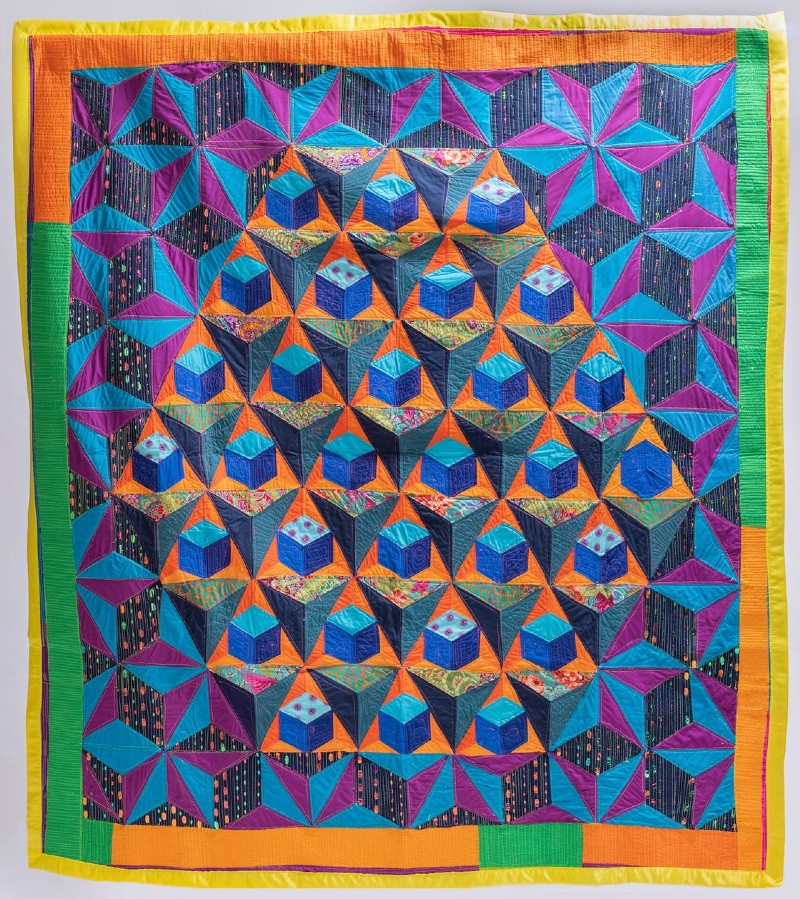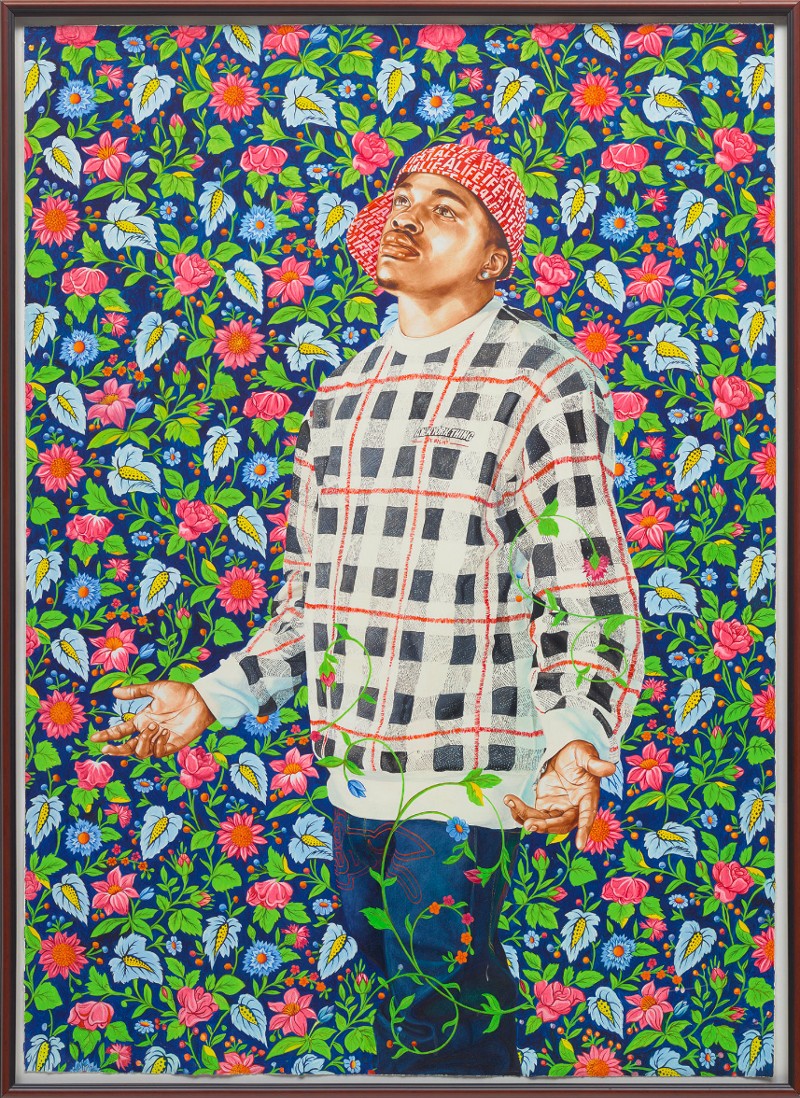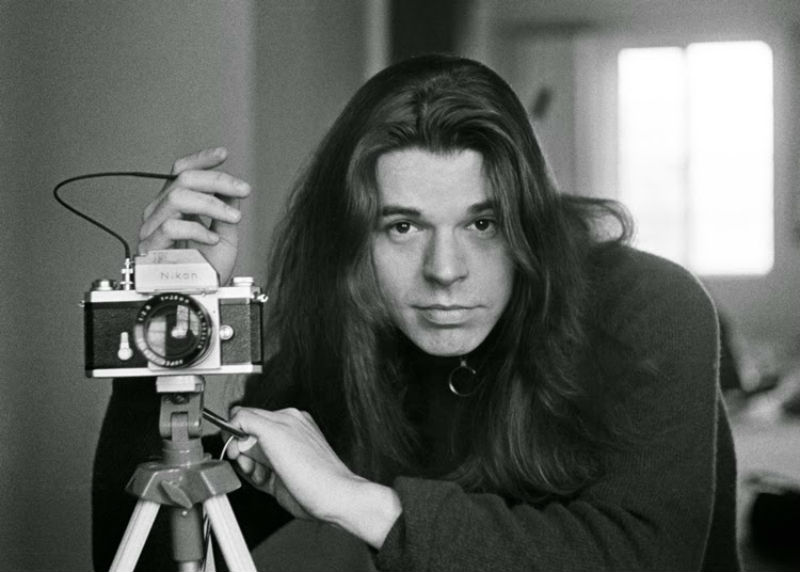Friday Five: Djangophonique, Seaholm, Dre Dav, Von Siwel, DÆmons

Friday Five highlights music by Washtenaw County-associated artists and labels.
This week features hot-club jazz from Djangophonique, pop-punk by Seaholm, hip-hop via Dre Dav, R&B (and more) from Von Siwel, and prog-metal by DÆmons.
Bits & Pieces: "The Small Details: Amy Sacksteder and Brenda Singletary" conjure meaning through assemblages at U-M's Institute for the Humanities Gallery

It all adds up in The Small Details, a two-person exhibition on view now through July 29 at the Institute for the Humanities Gallery in Ann Arbor.
Through accretion, addition, and accumulation Amy Sacksteder and Brenda Singletary conjure meaning from bits and pieces—ceramic and glass shards, wire, photos—assembling personal narratives that are highly specific in their material, but universal in their intent.
Systems & Shtetls: Mother Cyborg's "Crafting Our Digital Legacy" & Ruth Weisberg's "Of Memory, Time & Place" at Stamps Gallery

Stamps Gallery’s two simultaneous exhibitions have little in common visually, but they do share some overarching themes.
Mother Cyborg's Crafting Our Digital Legacy exhibit offers bright and captivating quilts that focus “upon our collective relationship with internet technologies, identity, legacy, and the future,” according to the text placed in the front of the gallery.
Ruth Weisberg's Of Memory, Time & Place showcases her ethereal designs and controlled color palettes in her mixed-media works.
While Weisberg’s often-muted tones and figural works contrast visually with Mother Cyborg’s dynamic abstract textiles, both artists ask us to consider where we came from and where we might be going.
Friday Five: Deniz Tek, Ingrid Laubrock & Andy Milne, Child Sleep, Cashmere Washington, EnD

Friday Five highlights music by Washtenaw County-associated artists and labels.
This week features rock 'n' roll by Deniz Tek, experimental jazz duets from Ingrid Laubrock and Andy Milne, shoegaze indie by Child Sleep, a noise-pop single via Cashmere Washington, and improvised noise courtesy of EnD.
You Are Invited: UMMA's "You Are Here" exhibit welcomes visitors back to the museum with works that help viewers experience the space

In March 2020, the University of Michigan Museum of Art (UMMA) was closed to the public along with countless other businesses and organizations after the announcement of a global pandemic caused by COVID-19. During that time, we were offered virtual exhibits at UMMA; then, in June 2021, in-person exhibits resumed followed by the October 2021 reopening of the museum’s classic Jonathan and Lizzie Tisch Apse, revitalized with bright, vibrant walls and artworks that interact with visitors’ senses.
UMMA’s first exhibit in the remodeled Tisch Apse is You Are Here. Curator Jennifer M. Friess writes about the joys of our renewed ability to come together in person, but she also notes that we still carry the past two and a half years with us: “While it is exciting to be together again and to see the world slowly reopen, we are also deeply impacted by what we’ve been through. This exhibition holds both of those feelings.”
Even works that have been in the space for decades seem imbued with new life.
Sock It to Me: Bob Seger’s eight most crucial forgotten songs

This story was originally published June 6, 2019, just before Bob Seger brought his farewell tour to Michigan. We're rerunning it because another Seger-related event is happening on June 26, 2022 from 3 pm to 4:30 pm at the Ann Arbor District Library's downtown location:
"Turn the Page: The Bob Seger Story with Edward Sarkis Balian"
Dr. Edward Sarkis Balian grew up in Detroit and was in a local band at the same time that Bob Seger was breaking into the music business during the tumultuous 1960s. Dr. Balian’s association has continued with Mr. Seger, as they have both shared the same entertainment attorney for over 40 years. In this interactive presentation, Dr. Balian answers questions in-depth, discusses video highlights of Seger's career, and shares many facets of Seger's personal and professional life.
Take Me to the "River": Former AADL staffer Shutta Crum discusses her latest book of poetry and her path from librarian to author

Shutta Crum worked for 24 years surrounded by books.
Now the former librarian at Ann Arbor District Library is adding to the stacks she used to stock, writing both children’s books and poetry.
When asked how librarianship connects with writing, Crum talked about how the job motivated her to become an author. “I knew I wanted a book of mine on those library shelves,” she said.
Crum's latest collection of poems, The Way to the River, navigates real and metaphorical waters, from looking for osprey where “Rainwater pelts river water” to recalling tumultuous moments when the poet asks someone terrorizing her, “what door you jimmied / to escape and machete through my memory.” The ever-present passage of time surges through these lines as Crum looks back and ahead.
The Way to the River begins with the reflection “Why Poetry,” which shares a preface by Crum and her poems, “Aboutness” and “How Poetry Reframes the Moment.” Her depiction of poetry tells us, “Poems are mini stories, fleeting images, quick gestures of recognition and a lilt of music for the soul,” a statement that also aptly describes her poetry. The following poems in the book form the “colorful collage” that Crum sees in poetry.
Friday Five: Modern Lady Fitness, Thomas Gun, Dave Menzo, Mark Zhu, Jeevan Angelo

Friday Five highlights music by Washtenaw County-associated artists and labels.
This week features post-punk pop by Modern Lady Fitness, rockabilly-tinged punk by Thomas Gun, pop-funk by Dave Menzo, bedroom balladry by Mark Zhu, and home-schooled hip-hop by Jeevan Angelo.
The Fine Art of Music: Cece June's lovely, emotional songs are the result of listening and looking

Cece Duran was born and raised in Barcelona, where she is currently spending her summer.
But it's in Ann Arbor where she's building her name as a singer-songwriter under the guise Cece June.
In 2021, June released an EP, Pieces, shot a video for the single "Mine," and played shows at venues in downtown Ann Arbor, and the University of Michigan’s annual Springfest.
June is back with a new single, “Over," which she made with friends from U-M. While the sadder side of Spanish folk music courses through June's songs, she also cites England's Radiohead, Ireland's Damien Rice, and America's Bon Iver—no strangers to melancholy melodies—as influences.
We caught up with June to discuss her acoustic-and-electronics single "Over," the influence of fine art on her music, and her future.
Just Want You to Know Who I Am: Ann Arbor indie-rocker Ceolsige introduces herself to the world on self-titled debut EP

Ceolsige just wants to introduce herself.
“Right now, with my music, all I’m trying to do is just let people know who I am," said Ann Arbor indie-rock singer-songwriter Kelsey Detering, who just released her debut EP under the artist moniker Ceolsige (pronounced see-ole-sidge), the old English variant of her first name.
"Especially, with this EP, I’m not trying to give any specific take on myself or anything. This is a taste of everything about me in one little package. I’m giving people that so they’ll know who I am as an artist. ‘Ceolsige’ is still me, that’s why I chose it. I don’t overthink my identity that much; I just do what feels right.”
Ceolsige eagerly follows her instincts across four honest, mighty tracks that question life, love, and society. The self-titled EP’s introspective lyrics, vigorous instrumentation, and arena-sized arrangements invite listeners to reflect and travel alongside her.
“What comes across a lot of my music right now is uncertainty … because of the age I’m at and time going by. I’m like, ‘OK, what’s gonna happen in my life? Am I gonna meet someone? Am I gonna enjoy things? Are we gonna fix this broken world? Are we going to improve things?” said Detering, a University of Michigan alumna and Ann Arbor School of Rock vocal/piano instructor.
“That gets played up more in people’s minds now, especially because uncertainty in life is heightened everywhere and all the time. I’ve picked up even more on that now.”


































